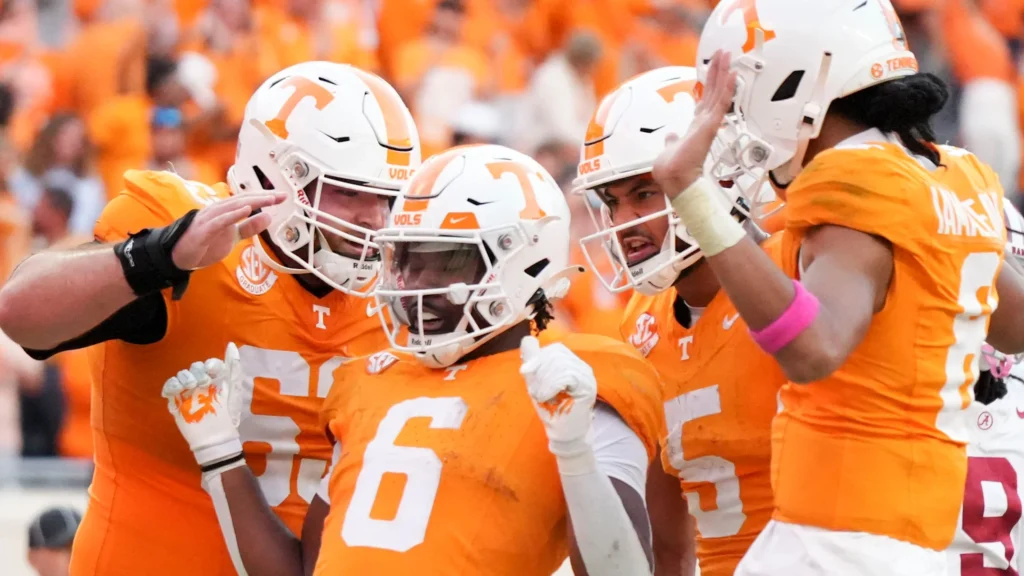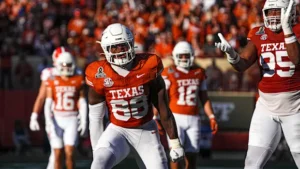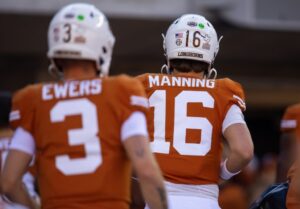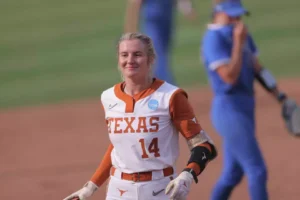
The Tennessee Volunteers, one of college football’s most storied programs, are at a crossroads in their approach to sponsorship and branding, reflecting a broader shift across collegiate athletics in the era of Name, Image, and Likeness (NIL). The conversation swirling around the Volunteers now centers on a critical question: should the program prioritize traditional brand partnerships rooted in legacy and market fit, or should it pivot toward sponsors whose NIL payout structures maximize immediate financial benefits for the athletes themselves? This nuanced debate unfolds against the backdrop of an evolving sports business landscape where the power dynamics between schools, athletes, and sponsors are in flux, and the very definition of what constitutes a “valuable” sponsorship is being redefined.
For decades, the Volunteers, like most major college programs, have aligned themselves with established corporate brands that embody the ethos and cultural identity of the university and its fan base. Such partnerships historically emphasized long-term brand association, community connection, and the prestige that comes with tying a high-profile program to recognizable companies. The iconic Power T, representing Tennessee, has graced jerseys and stadium signage alongside sponsors whose logos signal tradition, stability, and a shared set of values. These relationships have been carefully cultivated to enhance the university’s image and sustain a loyal fan base, often prioritizing brand synergy over direct financial maximization for players.
However, the advent of NIL rights has dramatically altered the calculus for all stakeholders. College athletes now have the unprecedented ability to monetize their personal brand through endorsements, social media deals, appearances, and other commercial activities. This shift has introduced new incentives and pressures on programs like Tennessee to rethink how they structure sponsorship deals and what criteria determine the “best” partnership. The Volunteers are reportedly exploring potential sponsorships that may not align as closely with traditional branding ideals but offer superior NIL payout frameworks that funnel greater immediate revenue to the players themselves.
This emerging strategy highlights a growing recognition that empowering athletes financially through NIL deals can serve multiple purposes. From a recruiting standpoint, programs that demonstrate a clear pathway for athletes to earn significant NIL income can attract top-tier talent who view these opportunities as critical to their long-term success. Furthermore, facilitating lucrative NIL arrangements can improve player satisfaction, loyalty, and motivation, potentially translating into better performance on the field. Tennessee’s leadership is thus weighing the potential trade-offs between brand consistency and NIL payout value as it navigates this evolving landscape.
The debate within Tennessee’s athletic department and administration reflects a broader tension across the NCAA and Power Five conferences. On one side are traditionalists who argue that sponsorships must uphold the university’s reputation and resonate authentically with the fan base. On the other side are pragmatists advocating for a more player-centric model where NIL opportunities are prioritized to keep pace with the commercial realities of modern collegiate sports. Tennessee’s potential pivot toward NIL payout-focused sponsors signals an embrace of the latter philosophy, recognizing that the marketplace for NIL deals is robust and that athletes’ financial empowerment may soon become the primary measure of a program’s appeal.
One key consideration for Tennessee is the type of sponsor that can deliver meaningful NIL value. Unlike traditional sponsorships that focus on stadium naming rights or exclusive advertising contracts, NIL-centric deals often involve tiered payout structures based on player popularity, social media reach, and performance metrics. Some companies specialize in NIL facilitation platforms, connecting brands directly with athletes for personalized endorsement opportunities. These sponsors operate with a digital-first approach, leveraging influencer marketing strategies to maximize exposure and engagement. Tennessee’s interest in such sponsors reflects an awareness that the future of athlete endorsements will be increasingly data-driven, dynamic, and personalized.
Additionally, NIL-focused sponsors can offer innovative contract models that adapt throughout the season, rewarding players for viral moments, social engagement spikes, or community involvement. This level of flexibility and responsiveness contrasts sharply with the rigid, multi-year contracts typical of legacy brand deals. By aligning with sponsors that prioritize NIL payouts, Tennessee may provide its athletes with a more agile and lucrative earning environment, which can enhance the overall attractiveness of the program in a hyper-competitive recruiting market.
Critics of this approach caution that prioritizing NIL payout value over brand alignment risks diluting the Volunteers’ storied identity and alienating traditional fans who cherish the program’s heritage. There is concern that a sponsorship landscape dominated by NIL payout metrics might favor flashy, short-term commercial gains over long-lasting, culturally meaningful partnerships. The Volunteers’ leadership must carefully balance these concerns, ensuring that any NIL-driven sponsorship strategy complements, rather than undermines, the program’s core values and community ties.
Moreover, there are operational challenges inherent in managing NIL-centric sponsorships at scale. Unlike singular brand deals managed by athletic departments, NIL facilitation often requires coordination among multiple athletes, external agencies, and sponsors, each with unique contracts and activation demands. Tennessee must develop robust internal infrastructure and compliance protocols to handle this complexity while maintaining NCAA and conference regulations. Failure to do so could result in administrative burdens or regulatory pitfalls that offset the financial benefits of enhanced NIL payouts.
The landscape of college sports sponsorship is also becoming increasingly competitive. Other Power Five programs are similarly exploring NIL-centric partnerships, and the race to offer athletes the best financial opportunities is intensifying. Tennessee’s consideration of new sponsors off the value of NIL payouts signals an understanding that traditional branding alone may not suffice to maintain competitive advantage. This shift is not merely reactive but strategic, positioning the Volunteers as an innovator in integrating NIL dynamics into institutional partnerships.
From the perspective of the athletes themselves, the promise of higher NIL payouts linked to program sponsorship is transformative. For many college players, NIL earnings represent a critical source of income that can offset the demands of scholarship life and help build financial security before professional careers begin. By fostering an environment that champions lucrative NIL deals, Tennessee can demonstrate a commitment to athlete welfare and economic empowerment, a factor increasingly emphasized in recruiting pitches and public relations efforts.
Furthermore, NIL-focused sponsors often bring complementary marketing resources and platforms that amplify athletes’ personal brands beyond the traditional collegiate sports sphere. This amplification can help Tennessee players develop sustained marketability, boost national recognition, and build fan engagement, all of which feed back into the program’s visibility and prestige. The mutually reinforcing cycle between NIL success and program prominence underlines why Tennessee’s potential pivot toward NIL payout-focused sponsorships carries broader strategic implications.
Another dimension to consider is the evolving regulatory environment around NIL and sponsorships. The NCAA, state legislatures, and the federal government continue to refine guidelines governing athlete compensation and brand partnerships. Tennessee must remain agile to adapt its sponsorship strategy within this shifting legal landscape, ensuring compliance while maximizing benefit. Choosing sponsors adept at navigating these regulatory complexities and committed to transparent, compliant NIL practices will be crucial.
In addition to football, Tennessee’s approach could serve as a template across its other sports programs, broadening the impact of NIL-driven sponsorships campus-wide. Basketball, volleyball, and track athletes increasingly command significant NIL interest, and aligning sponsorship strategy with NIL payout priorities can unify the university’s athletic branding while delivering financial benefits to a wider array of student-athletes. This holistic approach would position Tennessee as a leader in athlete-centered marketing innovation across collegiate sports.
It is also worth noting that this strategic reconsideration comes amid broader economic pressures on college athletics. Revenue volatility, shifting media rights landscapes, and the impact of streaming platforms have disrupted traditional financial models. NIL payouts have introduced new revenue streams for players but also altered institutional revenue distribution frameworks. By carefully selecting sponsors that emphasize NIL value, Tennessee may be better positioned to stabilize athlete-related income streams and navigate economic uncertainties with greater resilience.
Community stakeholders and fans will play a critical role in shaping the acceptance and success of this sponsorship pivot. Engaging the Volunteer fan base through transparent communication about the rationale for prioritizing NIL payouts can foster understanding and support. Highlighting how NIL-focused sponsorships directly benefit athletes who represent Tennessee on the field and court may resonate with fans eager to see their favorite players thrive both athletically and financially. This narrative could help preserve the sense of tradition even as the program innovates its commercial partnerships.
Finally, the Tennessee Volunteers’ consideration of new sponsors based on the value of NIL payouts rather than strict brand alignment marks a significant evolution in college sports business strategy. It reflects a pragmatic acknowledgment that the collegiate athletics ecosystem is rapidly changing, with athletes wielding more commercial power than ever before. Programs that adapt to this reality by embracing sponsorships that maximize NIL opportunities can position themselves for sustained recruiting success, athlete satisfaction, and competitive advantage.
While balancing tradition with innovation will be delicate, Tennessee’s willingness to explore this frontier underscores the program’s commitment to maintaining relevance and leadership in the 21st-century college sports landscape. The Volunteers’ potential new sponsorship model, focused on NIL payout value, could serve as a blueprint for other programs navigating the complexities of NIL integration, offering lessons on how to align commercial partnerships with the evolving priorities of athletes and fans alike.
In conclusion, as Tennessee Volunteers deliberate on their next major sponsorships, the emphasis on NIL payout value over conventional brand fit exemplifies a forward-thinking approach. This paradigm shift champions athlete financial empowerment, reflects contemporary market dynamics, and challenges entrenched notions of collegiate sponsorship value. How Tennessee balances these factors will shape not only the program’s commercial future but also its cultural identity and competitive stature in years to come.





